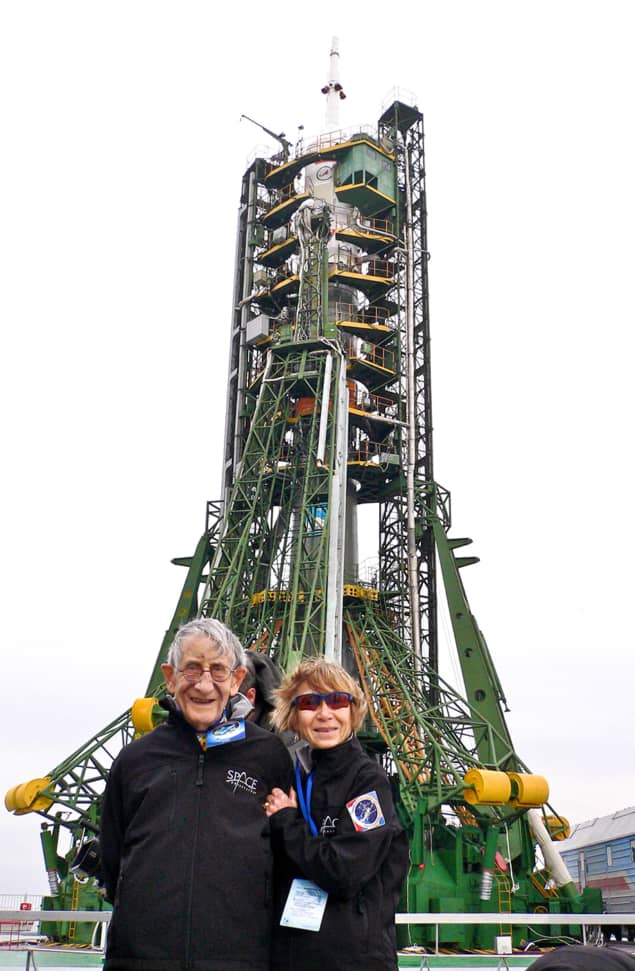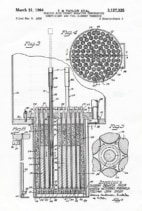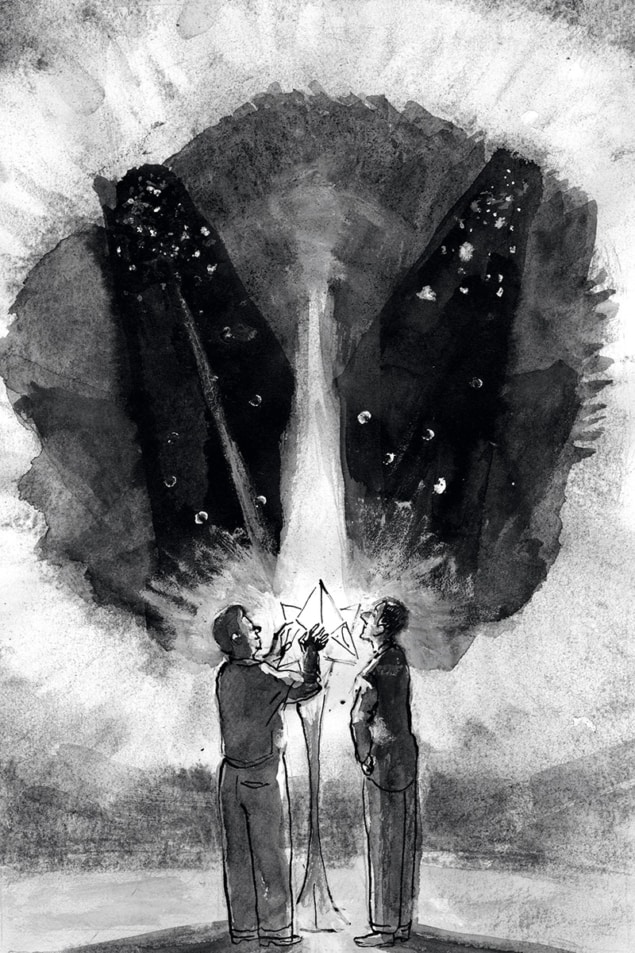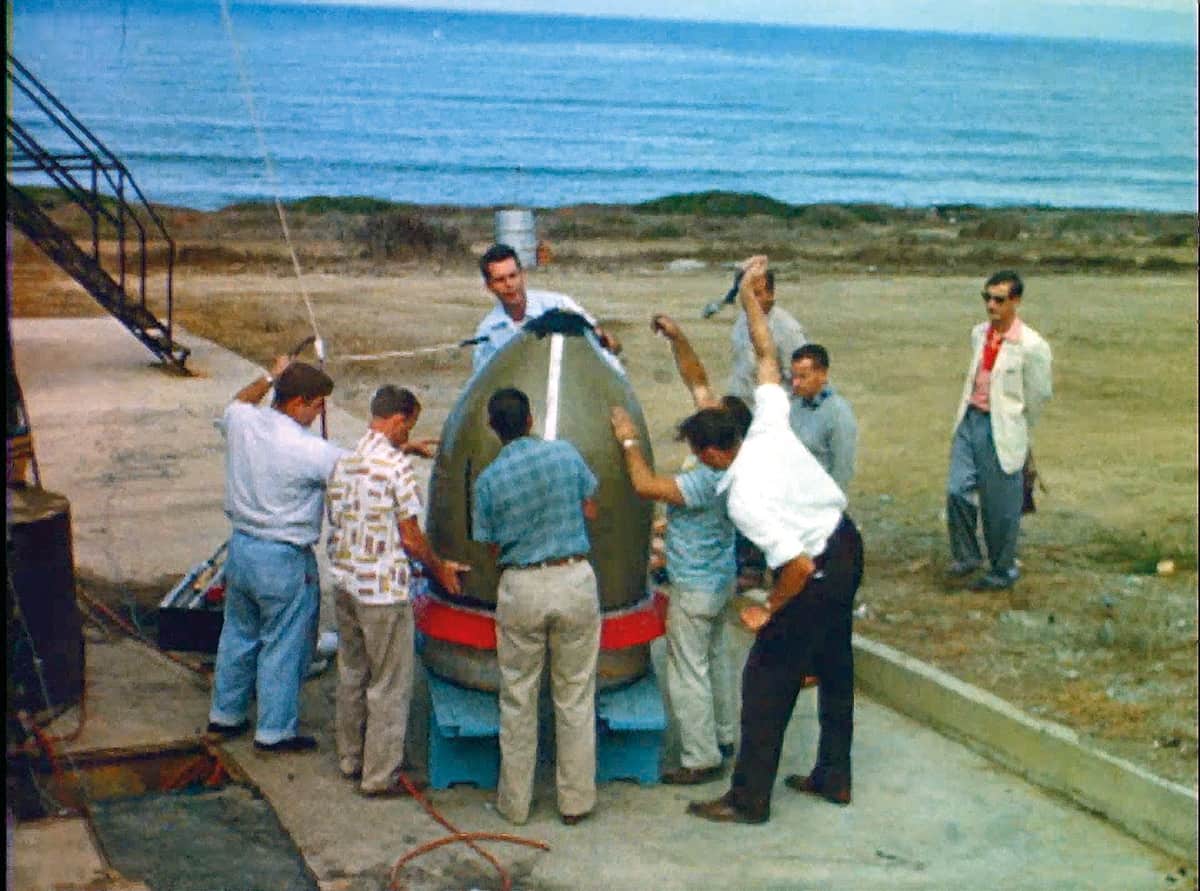I actually communicated swith him and introduced him to Bio char in 2007. He had put out a book on climate issues and had not known of this particular discovery from the Amazon. he immediately grasped its importance.
he had a real chance to be a friend of Einstein, but oddly never pursued it. his recognized contribution was pulling together electrodynamics. in the process he took two theories and by assuming that the infinity from one was the same as the infinity from the other, he got his equations without understanding that this actually proved the existence of empirical infinity.
I came to this conclusion from another direction and it wonderfully underwrites cloud cosmology
Freeman Dyson: the visionary thinker and maverick scientist who challenged authority
16 May 2023 Hamish Johnston
https://physicsworld.com/a/freeman-dyson-the-visionary-thinker-and-maverick-scientist-who-challenged-authority/
From space travel and the origins of life, to quantum foundations and extraterrestrial megastructures; mathematical physicist Freeman Dyson was a radical scientist. Based on a new biography, Hamish Johnston delves into the life and scientific legacy of the unorthodox genius, who was born 100 years ago
Aiming high Freeman Dyson and his wife Imme Dyson, attending the launch of the Soyuz TMA-14 Spacecraft Mission at the Baikonur Cosmodrome in Kazakhstan in March 2009. (Photograph by George Dyson)
In the pantheon of famous physicists, the late Freeman Dyson holds a special place. Often described as a maverick, radical and pioneering scientist, Dyson made significant contributions to the foundations of modern physics. He spent vast swathes of his career on highly speculative projects across a wide range of fields, from space exploration to the origins of life. Despite having a lifelong distain for authority, Dyson found a place in the US military–industrial complex. He also wrote numerous popular books on science and left a noteworthy scientific legacy.
Dyson died on 28 February 2020 at the age of 96, and shortly afterwards the physicist, author and historian David Kaiser at the Massachusetts Institute of Technology was approached to write a book that would explore his extraordinary life. As it happens, Kaiser had already written about Dyson in his 2009 book Drawing Theories Apart. He had interviewed him in depth for the book and was also given access to letters that Dyson had written to his parents early on in his career – letters that provide marvellous insights into Dyson from a young age.
But given the multifaceted nature of Dyson’s life, Kaiser quickly realised just how challenging it would be for him to write such a biography on his own. Instead Kaiser gathered a team of 10 contributors and the result is the thoroughly entertaining and fascinating collection of essays titled “Well, Doc, You’re In”: Freeman Dyson’s Journey through the Universe. I cracked open the book just as I was jetting off on holiday and was instantly hooked. It is a genuine vacation read for those interested in the history of science and influential scientists, as Dyson worked with some of the best – and each contributing author paints a vivid picture of an aspect of Dyson’s life.
Young rebel
Dyson was born on 15 December 1923 in the southern English village of Crowthorne, Berkshire. His was a comfortable childhood – at least in terms of material needs. His mother had a law degree and worked as a social worker after Dyson was born. His father was a composer of some note and taught at the Royal College of Music and at Winchester College. Founded in 1382, Winchester is one of the country’s most prestigious private schools and Dyson himself would later be a pupil there.
A mathematical prodigy from an early age, Dyson once joked that he worked out the concept of the infinite mathematical series while lying in his crib. He was also a voracious reader, who developed a keen interest in science at a very young age. The science writer Amanda Gefter, who has contributed a chapter to “Well, Doc, You’re In” on Dyson’s formative years, says this love for science was fortified by the healthy disdain for authority that he developed early in life.
The problem for the young Dyson was that science was not taught at the preparatory school he attended before going to Winchester. In Britain, such “prep schools” are generally private institutions designed to prepare children for entry to elite secondary schools. But when Dyson was a child, a good education still focussed on classics with some mathematics, and science was seen as being too practical to be of use to the next generation of gentleman. Undeterred, Dyson and several of his classmates created a science society – a group that he later referred to as a persecuted minority. Club members read books on science and explained concepts to each other – lessons that Dyson felt could not be learned in the classroom.
He describes his time at prep school as the worst of his life – the regime was brutal and, to add insult to injury, the school where he boarded was only a short stroll from the family home. But the solace he found in science lit the spark of a remarkable career. “Science is a conspiracy of brains against ignorance, that science is a revenge against oppressors, that science is a territory of freedom and friendship in the midst of tyranny and hatred,” he later wrote.
Once Dyson arrived at Winchester in 1936, science was on the curriculum. But it was not taught well so Dyson was able to maintain his status as an outsider, despite being a star pupil. In 1941 he went on to study mathematics at the University of Cambridge, only to find the university emptied by the Second World War. He ended up graduating in just two years and would spend many nights clandestinely climbing the exteriors of the university’s ancient buildings with friends.
The war dominated the next phase of Dyson’s life, which is described in the chapter “Calculation and reckoning: navigating science, war, and guilt” by William Thomas, a science policy analyst from the American Institute of Physics. After leaving Cambridge, Dyson did operational research for the Royal Air Force Bomber Command, which Kaiser describes as “refined statistical analyses” looking for patterns that military commanders may have overlooked. Among other things, he calculated the probability with which bombers will collide with each other when they fly in a tight formation – a configuration that was known to make missions less susceptible to a successful enemy attack.
Given his disdain for authority, it is no surprise that Dyson decried the “muddle and mendacity” of Bomber Command. It is likely that Dyson was extremely frustrated that many of his findings were not acted upon, leading him to feel guilty that lives were lost despite his best efforts. Thomas suggests that this incompetence was a symptom of an important problem within the British establishment at the time – that it did not seem to value the nation’s scientists.
America bound
This disregard for science appears to be at the heart of Dyson’s decision to settle in the US – a country with a then booming economy that was embracing science and technology as engines of growth. This move is described in the chapter by Kaiser entitled “First apprentice”, which opens in post-war England with Dyson’s decision to switch from mathematics to physics.
According to Kaiser, Dyson had long been torn between mathematics and physics, and while still at Bomber Command had set himself the challenge of proving a conjecture of number theory. If he succeeded, he told himself he would become a mathematician; if he failed he would pursue a career in physics. Dyson failed and in 1946 returned to Cambridge to become a physicist.
It was the lack of a suitable doctoral adviser at Cambridge that also drove Dyson to the US, where he arrived in 1947 as a Commonwealth Fellow to do a PhD at Cornell University. His supervisor was the theoretical physicist Hans Bethe, who had left Germany in the mid-1930s because of Nazi persecution and worked on the development of nuclear weapons on the Manhattan Project.
Early days Freeman Dyson in August 1951, relaxing amid diapers for his firstborn child, Esther, in Zurich, Switzerland. In the autumn of that year, he moved back to the US, to take up a professorship at Cornell University. (Photograph by Verena Huber-Dyson, courtesy George Dyson)
Dyson spent a year at Cornell, and another at the Institute for Advanced Study (IAS) in Princeton, where he worked with its director Robert Oppenheimer on quantum electrodynamics (QED). He also collaborated closely with Richard Feynman, who was at Cornell at the time, and Dyson was an early user of Feynman’s famous diagrams. Indeed, Kaiser describes Feynman as Dyson’s “private tutor”. Dyson was assigned to improve on a “rough and ready” calculation that Bethe had published in 1947 concerning QED. He got stuck in and made short work of the pesky divergences that had plagued Bethe’s calculation. Dyson breathed new life into the field, which Kaiser says “had ground to a halt before Dyson arrived”.
Going into a sort of semi stupor as one does after 48 hours of bus riding, I began to think very hard about physics, and particularly about the rival radiation theories of [Julian] Schwinger and Feynman
Kaiser found that Dyson’s letters provide a crucial understanding of the thought processes that led to his epiphany in QED, which famously happened as he was on a long bus journey. He recounts how Dyson had a “flash of illumination on the Greyhound bus”, as he came up with the equivalence of the two competing formulations of QED. “On the third day of the journey a remarkable thing happened; going into a sort of semi stupor as one does after 48 hours of bus riding, I began to think very hard about physics, and particularly about the rival radiation theories of [Julian] Schwinger and Feynman,” Dyson wrote. “Gradually my thoughts grew more coherent, and before I knew where I was, I had solved the problem that had been in the back of my mind all this year, which was to prove the equivalence of the two theories. Moreover, since each of the two theories is superior in certain features, the proof of equivalence furnished a new form of the Schwinger theory that combines the advantages of both.” Despite claiming that this work was “neither difficult nor particularly clever”, Dyson says he “became quite excited over it when I reached Chicago and sent off a letter to Bethe announcing the triumph.”
After two years in the US, Dyson’s Commonwealth Scholarship required that he return to the UK, so he moved to the University of Birmingham in 1949. However, he did not last long there. Kaiser says that Dyson had found Cornell “alive with ideas” and that he travelled extensively while he was there – describing his journeys in “almost anthropological detail” in his letters to his family. It is perhaps no surprise that Dyson quickly found his way back to the US.
Lifelong professorship
By 1951 Feynman had moved from Cornell to the California Institute of Technology (Caltech) – and, according to Kaiser, Bethe convinced Cornell that Dyson was the only person who could replace Feynman. So Dyson was granted a Cornell professorship, despite having not finished his doctorate – something that Dyson relished for the rest of his life.
In 1952 Dyson moved again, accepting a lifelong professorship at the IAS, where he remained until his death nearly 70 years later. That long tenure is described in the chapter “A frog among birds” by Robbert Dijkgraaf, a mathematical physicist who ran the IAS from 2012 until he stepped down last year to become Minister of Education, Culture and Science of the Netherlands.
Dijkgraaf writes that Dyson’s arrival at the IAS corresponded to a growing rift between mathematics and theoretical physics. Theoretical physics was becoming increasingly messy as researchers pushed theories to breaking point in order to describe nature, whilst mathematics was becoming more abstract and rigorous. Dijkgraaf suggests that Dyson was happy to be part of both worlds. Dyson had said that “some mathematicians are birds and some are frogs”, meaning that some fly high and have an overview of their field while others are deep in the mire of a particular problem, solving it before moving on to another. Dyson saw himself as a frog, hopping from one intellectual pond to another.
Safe reactors and spaceships
Perhaps the most fascinating pond that Dyson swam in was that of the US’s burgeoning military–industrial complex. In the 1950s he joined the newly formed General Atomics and would spend his summers on leave from IAS working for the firm in California. According to Kaiser, General Atomics was formed to develop non-military uses of nuclear technologies, with Dyson “thrilled” to be able to apply his mathematical prowess to solve engineering problems.
Chain reaction Figures from US Patent no. 3,127,325 for the Training, Research, Isotopes, General Atomics (TRIGA) reactor, filed 9 May 1958 by Theodore Taylor, Andrew McReynolds, and Freeman Dyson. (Source: US Patent and Trademark Office)
In a chapter titled “Single stage to Saturn”, Dyson’s son George describes how his father’s first contribution was to help design a small, intrinsically safe fission reactor that would shut down quickly, without human or mechanical intervention. This became the Training, Research, Isotopes, General Atomics (TRIGA) reactor, which was an astonishing success – 66 were built around the world and some of them are still running today.
However, Dyson’s most intriguing project at General Atomics never got off the ground. This was Project Orion, which aimed to build a spaceship powered by successive nuclear explosions. According to George Dyson, Project Orion began in late 1957 as a response to the Soviet Union’s successful launch of the Sputnik satellite in October that year. His father took a year’s leave of absence from IAS to work on Project Orion, in part because he saw nuclear pulse propulsion as a viable way of exploring the solar system. Kaiser suggests that Dyson, like many of his generation, had childhood fantasies of space travel that were inspired by authors like Jules Verne.
The original plan was for a 4000 tonne spaceship – powered by 2600 nuclear bombs – that could deliver a 1600 tonne payload to Earth orbit. The idea was that a bomb would be detonated under the spaceship, sending it upwards. Before the spaceship had a chance to fall back, another bomb would be dropped from the spaceship and detonated – and so on. While such a scheme sounds astonishing today, Kaiser says that Dyson produced a large number of technical reports that evaluated the plan in terms of “real physics and real engineering”.
Wishful thinking Despite his ambition, Dyson’s plans for Project Orion – using nuclear pulse propulsion to get a spacecraft into orbit – never really took off. (Courtesy: MIT/Laurent Taudin; www.unsitesurinternet.fr)
The main question that Dyson and colleagues had to answer was could such a spaceship operate without blowing itself to smithereens? And if the structure of the ship could survive, how could the crew be protected from repeated blasts of radiation? That is where Dyson’s calculations came in. Dyson and his colleagues designed a system whereby a detonating bomb would vaporize a propellent material, blasting it upwards towards the spaceship in a relatively tight jet. When the material in the jet struck the bottom of the spaceship, it would create a plasma reaching temperatures hotter than the surface of the Sun.
A crucial design consideration was the plate on the spacecraft that absorbs kinetic energy from the bombs. Would it withstand repeated assaults by the plasma? Another important question was how radiation in the jet would behave when it hit the plate – would it travel straight through, or be absorbed, or reflected? On both these matters, Dyson and colleagues were able to show that their design was sound. General Atomics even built a one-metre-diameter prototype that was tested using a conventional explosion in 1959.
Preventing stupid decisions
Despite their work, Project Orion was ultimately terminated in 1965, as several things conspired against it. One was the ascendency of the National Aeronautics and Space Administration (NASA), which was not interested in nuclear-powered space. The other was the 1963 nuclear test ban treaty, which made testing Project Orion impossible. As the science writer Ann Finkbeiner points out in her chapter “Dyson, warfare and the Jasons”, Dyson was initially against a test ban – probably because it would mean the end of progress on Project Orion. However, he changed his mind by 1963 and supported the ban because he realised that the rising number of tests being done was unsustainable.
The JASON defence-advisory panel consisted of a group of scientists that were assembled in about 1960 to provide scientific and technical advice to the US Department of Defense. Dyson joined at the very beginning and remained a member until his death. Initially, I found this surprising give Dyson’s damning verdict on how the RAF’s Bomber Command responded to the scientific advice it was given. However, Finkbeiner, who Kaiser describes as “the world expert” on the JASON panel, points out that Dyson’s Bomber Command experience galvanized him to make “a lifelong commitment” to help prevent military commanders from making stupid decisions with lethal consequences.
Crash and burn Dyson (right, holding briefcase) watches preparations for a tethered test for Project Orion, of a one-metre-diameter flying model propelled by high explosives at General Atomic’s Point Loma test site, summer 1959. (Source: photograph by Jaromir Astl, courtesy George Dyson)
Dyson worked on more than 200 studies during his six decades as an advisor on the panel. While most of his work remains classified, Finkbeiner says that a lot of it was related to test bans, missile defence and submarine warfare. One task that she says he revelled in was “lemon detection” – spotting bad ideas and stopping them from being acted on. A famous example is the “Neutrino Detection Primer”, a panel report that was handed to anyone who suggested that a nuclear-powered submarine could be detected by the copious neutrinos that its reactor emitted. Indeed, Dyson reckoned that the advisory group saved the US government hundreds of billions of dollars by helping it avoid such dud projects.
Dyson also had a great interest in the origins of life, as the chemist and science writer Ashutosh Jogalekar explains in his chapter “A warm little pond”, which discusses the “metabolism-first” hypothesis. Unlike the more familiar replicator-first hypotheses, which focus on understanding how molecules can create copies of themselves, metabolism-first looks at how networks of chemical reactions (such as those essential for life) can emerge and increase in complexity over time.
Like a true physicist, Dyson looked at the emergence of life as a phase transition between thermodynamic states – in this case a state he dubbed “Garden of Eden” and another that he called “hot sulphide soup”. According to Jogalekar, Dyson was an advocate of metabolism-first because it did not require the accuracy that self-replication would need. Ironic for a scientist famous for the mathematical accuracy of his work – perhaps Dyson realized that nature could never be as accurate as himself.
Extraterrestrial energy
No account of Dyson’s life would be complete without a chapter on what is perhaps his most famous notion – the Dyson sphere. This is described in a chapter called “Cosmic seer”, by astrobiologist and
Dyson developed the idea of his sphere in 1960, as he pondered the evolution of a technologically advanced society. He reckoned that such a civilization’s energy consumption would grow until it outstripped the total stellar irradiance received by its planet. He therefore concluded that such a civilization would satisfy its appetite for energy by surrounding its star with a megastructure he dubbed a Dyson sphere. Dyson first wrote about the sphere in Science magazine in 1960, describing a hollow shell surrounding a star that would capture all of the star’s energy.
While the sphere was originally inspired by a 1937 science-fiction story that Dyson had read, the idea is taken very seriously by astronomers involved in the Search for Extraterrestrial Intelligence (SETI). As Dyson pointed out, the presence of a sphere would have a significant impact on the light we observe coming from a star – shifting its output into the infrared, which is something that could be observed from Earth
A bright legacy Freeman Dyson surrounded by his six children and 16 grandchildren at his 90th birthday celebration at the Institute for Advanced Study in Princeton, New Jersey, in 2013. (Photograph by George Dyson)
For many people who look up to Dyson as a hero of science, there is one aspect of his life that is puzzling – his divergence from the scientific consensus on climate change. In 2006 Dyson published The Scientist as Rebel, in which his view of how humans should respond to global warming diverged from the scientific consensus. Kaiser addresses this thorny issue head on in his introduction. Kaiser told me that Dyson had engaged with the topic for 50 years and his position changed significantly over that time.
Dyson began work on climate change in the early 1970s, when he identified potential impacts of rising carbon dioxide levels and suggested solutions including tree planting and a modest carbon tax. He continued to engage with the topic until the 1990s, when he began to disagree with the growing emphasis on computer simulations and top-down government policies for reducing greenhouse-gas emissions. Fast forward to the 2000s and Kaiser says that Dyson had disengaged from doing climate science and was mainly commenting from the side-lines. This was when he started to say that concerns about global warming were “grossly exaggerated” and that the world’s citizenry have been deluded by climate-model experts.
Kaiser suggests that Dyson’s hostility stemmed from his view that our current response to climate change is nature-first rather than human-first. “He was to the end a techo-optimist who thought that human ingenuity will get us out of this,” Kaiser told me. He also says that Dyson did not correct the record when “flat out climate-change deniers” misrepresented his views.
While Dyson’s latter views on climate change seem unfortunate to people who otherwise have a great respect for him, Kaiser points out that Dyson was doing what he did best: challenging authority and championing a contrary view.“Well, Doc, You’re In”: Freeman Dyson’s Journey through the Universe edited by David Kaiser, The MIT Press 304pp £25hb






No comments:
Post a Comment